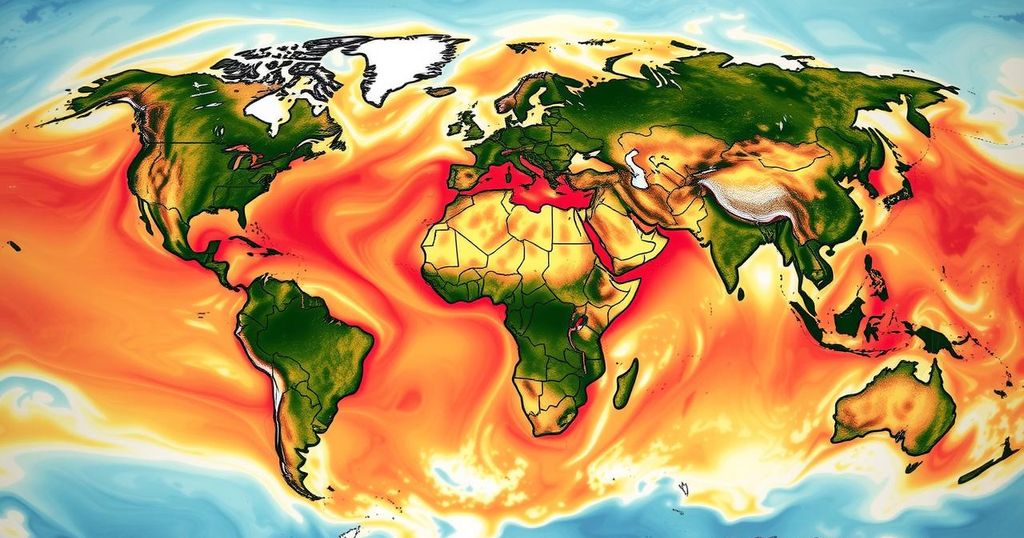2024 witnessed unprecedented global temperatures, making it the warmest year on record since 1850, with upper ocean heat content also at record highs. Notably, Antarctic sea ice extent reached a second-lowest record and significant tropical storm activity occurred. Overall, the year exhibited alarming trends in climate conditions, emphasizing the urgent need for action against climate change.
In 2024, the National Oceanic and Atmospheric Administration (NOAA) reported that Earth recorded its highest global surface temperatures since systematic records began in 1850, with an increase of 2.32°F (1.29°C) above the 20th-century average. The upper ocean heat content also reached unprecedented levels, indicating a strong retention of heat in the oceans. Minimal Antarctic sea ice extent was documented in February and September, while 85 named tropical storms were observed across the globe, 18 of which occurred in the North Atlantic, surpassing historical averages.
Overall, 2024 was characterized by warmer-than-average temperatures spanning various regions, with significant anomalies noted in the Arctic and northeastern North America. The extent of Northern Hemisphere snow cover was slightly below average, marking a decline in annual snowfall records since 1967. The Arctic and Antarctic regions also reflected concerning trends in sea ice extent, where 2024 marked some of the lowest levels on record, reinforcing concerns about climate change.
A total of 85 tropical storms were cataloged globally in 2024, which slightly fell below the average for the previous three decades. However, the North Atlantic experienced above-average hurricane activity, leading to severe impacts, particularly in the United States. In December, global temperatures continued to remain elevated, marking it the second warmest December on record, alongside alarming reductions in sea ice coverage in both hemispheres and minimal snowfall.
The data provided by NOAA serves as a critical element for understanding climate variability and underscores the urgency of addressing global warming and its cascading effects on weather patterns and ecosystems.
The report from the NOAA is significant as it presents critical data on climate trends, focusing on temperature increases, ocean heat content, and changes in precipitation and snow cover patterns. The findings reflect the ongoing impact of climate change on terrestrial and marine environments, noting alarming statistics regarding sea ice extent in both the Arctic and Antarctic regions. Such statistics are pertinent for policymakers, researchers, and the public, providing insight into the severity of climate-related challenges faced globally. The information is essential for communities and officials to adapt and develop mitigation strategies against the backdrop of increasingly frequent extreme weather events and altered climatic patterns. By scrutinizing historical climate data, scientists aim to better understand the underlying trends contributing to global warming and its consequences.
In summary, the NOAA’s report for 2024 highlights notable increases in global temperatures, record upper ocean heat content, and concerning reductions in sea ice extent, indicating the profound effects of climate change. The uptick in tropical storms, particularly in the North Atlantic, emphasizes the necessity for robust climate action and adaptive strategies. The ongoing data collection and analysis serves as a foundational aspect for informed decision-making intended to address urgent climate challenges.
Original Source: www.ncei.noaa.gov






